Advertisements
Chapters
2: Linear Equations in One Variable
3: Understanding Quadrilaterals
4: Data Handling
5: Squares and Square Roots
6: Cubes and Cube Roots
7: Comparing Quantities
8: Algebraic Expressions and Identities
9: Mensuration
10: Exponents and Powers
11: Direct and Inverse Proportions
12: Factorisation
▶ 13: Introduction to Graphs
![NCERT solutions for Mathematics [English] Class 8 chapter 13 - Introduction to Graphs NCERT solutions for Mathematics [English] Class 8 chapter 13 - Introduction to Graphs - Shaalaa.com](/images/mathematics-english-class-8_6:a152220a99ba47cf8d1b775ab26b8834.jpg)
Advertisements
Solutions for Chapter 13: Introduction to Graphs
Below listed, you can find solutions for Chapter 13 of CBSE NCERT for Mathematics [English] Class 8.
NCERT solutions for Mathematics [English] Class 8 13 Introduction to Graphs EXERCISE 13.1 [Pages 160 - 163]
The following graph shows the temperature of a patient in a hospital, recorded every hour.
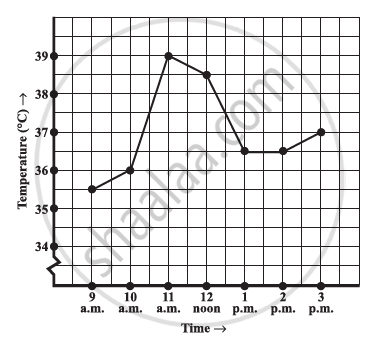
- What was the patient’s temperature at 1 p.m.?
- When was the patient’s temperature 38.5°C?
- The patient’s temperature was the same two times during the period given. What were these two times?
- What was the temperature at 1.30 p.m.? How did you arrive at your answer?
- During which periods did the patients’ temperature showed an upward trend?
The following line graph shows the yearly sales figures for a manufacturing company.
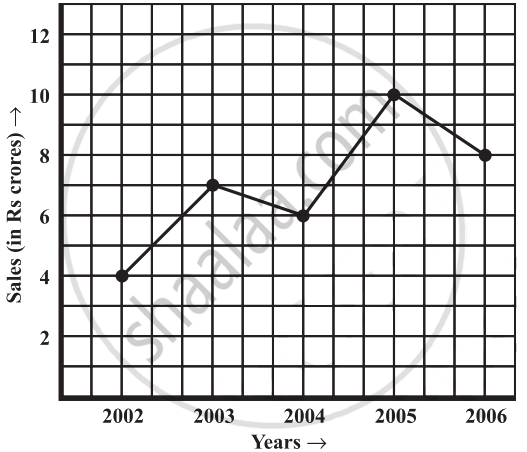
- What were the sales in (i) 2002 (ii) 2006?
- What were the sales in (i) 2003 (ii) 2005?
- Compute the difference between the sales in 2002 and 2006.
- In which year was there the greatest difference between the sales as compared to its previous year?
For an experiment in Botany, two different plants, plant A and plant B were grown under similar laboratory conditions. Their heights were measured at the end of each week for 3 weeks. The results are shown by the following graph.

- How high was Plant A after (i) 2 weeks (ii) 3 weeks?
- How high was Plant B after (i) 2 weeks (ii) 3 weeks?
- How much did Plant A grow during the 3rd week?
- How much did Plant B grow from the end of the 2nd week to the end of the 3rd week?
- During which week did Plant A grow most?
- During which week did Plant B grow least?
- Were the two plants of the same height during any week shown here? Specify.
The following graph shows the temperature forecast and the actual temperature for each day of a week.
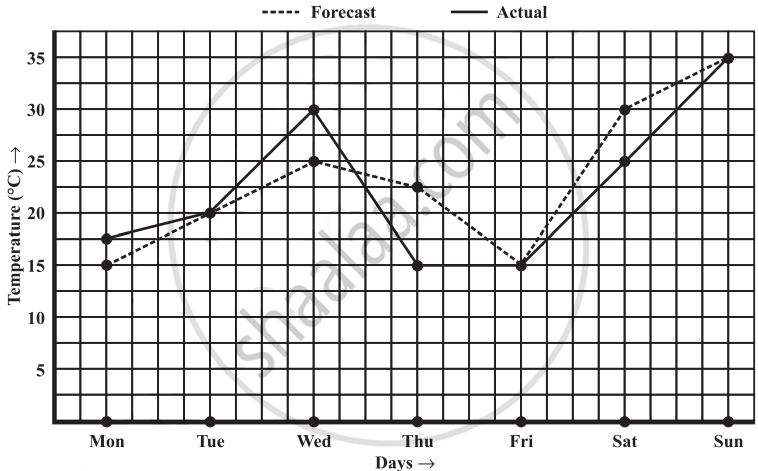
- On which days was the forecast temperature the same as the actual temperature?
- What was the maximum forecast temperature during the week?
- What was the minimum actual temperature during the week?
- On which day did the actual temperature differ the most from the forecast temperature?
Use the tables below to draw linear graphs.
The number of days a hill side city received snow in different years.
| Year | 2003 | 2004 | 2005 | 2006 |
| Days | 8 | 10 | 5 | 12 |
Use the tables below to draw linear graphs.
Population (in thousands) of men and women in a village in different years.
| Year | 2003 | 2004 | 2005 | 2006 | 2007 |
| Number of men | 12 | 12.5 | 13 | 13.2 | 13.5 |
| Number of women | 11.3 | 11.9 | 13 | 13.6 | 12.8 |
A courier-person cycles from a town to a neighboring suburban area to deliver a parcel to a merchant. His distance from the town at different times is shown by the following graph.
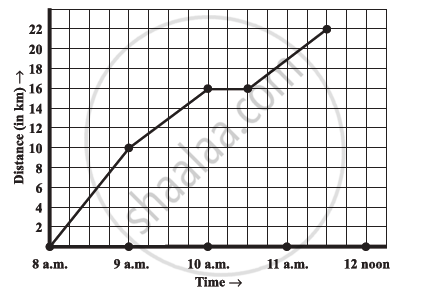
- What is the scale taken for the time axis?
- How much time did the person take for the travel?
- How far is the place of the merchant from the town?
- Did the person stop on his way? Explain.
- During which period did he ride fastest?
Can there be a time-temperature graph as follows? Justify your answer.
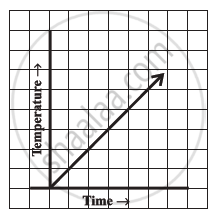
Can there be a time-temperature graph as follows? Justify your answer.
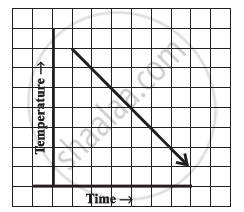
Can there be a time-temperature graph as follows? Justify your answer.
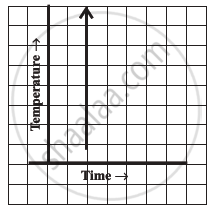
Can there be a time-temperature graph as follows? Justify your answer.
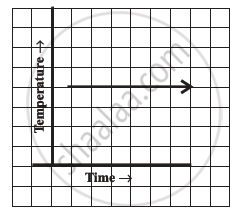
NCERT solutions for Mathematics [English] Class 8 13 Introduction to Graphs EXERCISE 13.2 [Pages 168 - 169]
Draw the graphs for the following tables of values, with suitable scales on the axes.
Cost of apples
| Number of apples | 1 | 2 | 3 | 4 | 5 |
| Cost (in ₹) | 5 | 10 | 15 | 20 | 25 |
Draw the graphs for the following tables of values, with suitable scales on the axes.
Distance travelled by a car
| Time (in hours) | 6 a.m. | 7 a.m. | 8 a.m. | 9 a.m. |
| Distance (in km) | 40 | 80 | 120 | 160 |
- How much distance did the car cover during the period 7.30 a.m. to 8 a.m.?
- What was the time when the car had covered a distance of 100 km since it's start?
Draw the graphs for the following tables of values, with suitable scales on the axes.
Interest on deposits for a year:
| Deposit (in Rs) | 1000 | 2000 | 3000 | 4000 | 5000 |
| Simple interest (in Rs) | 80 | 160 | 240 | 320 | 400 |
- Does the graph pass through the origin?
- Use the graph to find the interest on Rs 2500 for a year:
- To get an interest of Rs 280 per year, how much money should be deposited?
Draw a graph for the following:
| Side of square (in cm) | 2 | 3 | 3.5 | 5 | 6 |
| Perimeter (in cm) | 8 | 12 | 14 | 20 | 24 |
Is it a linear graph?
Draw a graph for the following:
| Side of square (in cm) | 2 | 3 | 4 | 5 | 6 |
| Area (in cm2) | 4 | 9 | 16 | 25 | 36 |
Is it a linear graph?
Solutions for 13: Introduction to Graphs
![NCERT solutions for Mathematics [English] Class 8 chapter 13 - Introduction to Graphs NCERT solutions for Mathematics [English] Class 8 chapter 13 - Introduction to Graphs - Shaalaa.com](/images/mathematics-english-class-8_6:a152220a99ba47cf8d1b775ab26b8834.jpg)
NCERT solutions for Mathematics [English] Class 8 chapter 13 - Introduction to Graphs
Shaalaa.com has the CBSE Mathematics Mathematics [English] Class 8 CBSE solutions in a manner that help students grasp basic concepts better and faster. The detailed, step-by-step solutions will help you understand the concepts better and clarify any confusion. NCERT solutions for Mathematics Mathematics [English] Class 8 CBSE 13 (Introduction to Graphs) include all questions with answers and detailed explanations. This will clear students' doubts about questions and improve their application skills while preparing for board exams.
Further, we at Shaalaa.com provide such solutions so students can prepare for written exams. NCERT textbook solutions can be a core help for self-study and provide excellent self-help guidance for students.
Concepts covered in Mathematics [English] Class 8 chapter 13 Introduction to Graphs are Concept of Bar Graph, Concept of Pie Graph (Or a Circle-graph), Graphical Representation of Data as Histograms, Concept of a Line Graph, Linear Graphs, Interpretation of Bar Graphs, Drawing a Bar Graph, Concept of Double Bar Graph, Interpretation of a Double Bar Graph, Drawing a Double Bar Graph, Some Application of Linear Graphs, Concept of Bar Graph, Concept of Pie Graph (Or a Circle-graph), Graphical Representation of Data as Histograms, Concept of a Line Graph, Linear Graphs, Interpretation of Bar Graphs, Drawing a Bar Graph, Concept of Double Bar Graph, Interpretation of a Double Bar Graph, Drawing a Double Bar Graph, Some Application of Linear Graphs.
Using NCERT Mathematics [English] Class 8 solutions Introduction to Graphs exercise by students is an easy way to prepare for the exams, as they involve solutions arranged chapter-wise and also page-wise. The questions involved in NCERT Solutions are essential questions that can be asked in the final exam. Maximum CBSE Mathematics [English] Class 8 students prefer NCERT Textbook Solutions to score more in exams.
Get the free view of Chapter 13, Introduction to Graphs Mathematics [English] Class 8 additional questions for Mathematics Mathematics [English] Class 8 CBSE, and you can use Shaalaa.com to keep it handy for your exam preparation.
